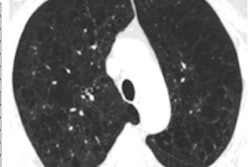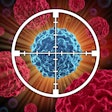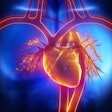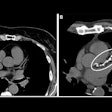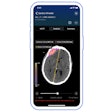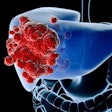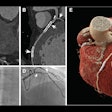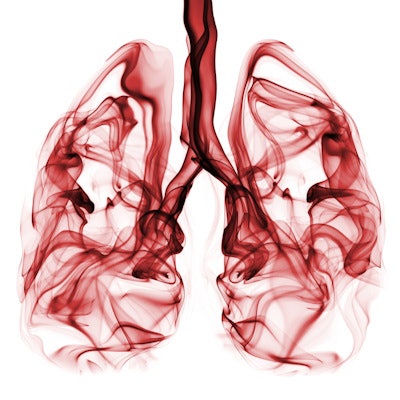
Emphysema found on chest CT is associated with higher lung cancer risk -- especially if the emphysema is severe, according to a study published May 3 in Radiology. Such findings could help indicate individuals suitable for CT lung cancer screening.
The findings could help physicians better identify patients at high risk for lung cancer, said study co-author Marleen Vonder, PhD, of the University of Groningen in the Netherlands in a statement released by the RSNA.
"Potentially, emphysema detected on a baseline CT scan could be used to select high-risk participants who would require more frequent follow-up lung cancer screening," she said.
Lung cancer is the main cause of cancer-related death around the world, and risk of the disease is evaluated using low-dose chest CT. Emphysema is also assessed with chest CT, and shares common risk factors with lung cancer, including smoking, chronic lung inflammation, and occupational exposure to air pollutants.
"Other underlying mechanisms like genetic susceptibility, chronic inflammation or DNA damage and abnormal repair mechanisms, or a combination thereof, have been proposed to link emphysema and lung cancer," Vonder said in the statement.
Previous studies have produced mixed results regarding the link between emphysema severity and lung cancer, and particularly between visual analysis performed by radiologists interpreting CT exams and quantitative assessment of CT images.
In the current study, a team led by Dr. Xiaofei Yang, also of the University of Groningen, explored the connection via a study that included data from 21 studies found in three databases (PubMed, Embase, Cochrane) that investigated the link between emphysema evaluated visually or quantitatively on chest CT and lung cancer; the studies included 107,000 patients, and researchers tracked emphysema severity and subtype.
The study review found that overall pooled odds of developing lung cancer given the presence of emphysema were 2.3 (with 1 being reference). These odds were similar for both visual (2.3) and quantitative (2.2) assessment of CT images.
Six of the 21 studies showed that the odds of a person being at higher risk for lung cancer increased with emphysema severity and were higher on visual assessment of CT images than on quantitative assessment, the group found.
| Odds for lung cancer based on emphysema severity and by type of assessment (reference = 1) | ||
| Emphysema severity | Quantitative assessment of CT images | Visual assessment of CT images |
| Trace | 1.9 | 2.5 |
| Mild | 2.2 | 3.7 |
| Moderate to severe | 2.5 | 4.5 |
"Emphysema diagnosed at chest CT was independently associated with a higher odds of developing lung cancer, regardless of whether it was assessed visually or quantitatively," the team wrote.
The study could have interesting effects on lung cancer screening, according to an accompanying commentary written by Dr. Andetta Hunsaker of Brigham and Women's Hospital in Boston.
"The implications of the current study by Yan et al are valuable for patient care," she wrote. "It may be that lung cancer screening as we know it will need to undergo some modification to include emphysema as one of the category descriptors, which will contribute to the Lung CT Screening Reporting and Data System score and follow-up screening intervals."







